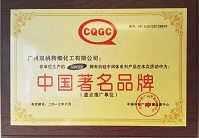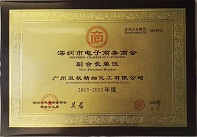
![]() E-mail: admin@gz-chemical.com
E-mail: admin@gz-chemical.com
Email us,best price and silane solutions for you!
Tel:+86 (20) 29035969

![]() E-mail: admin@gz-chemical.com
E-mail: admin@gz-chemical.com
Email us,best price and silane solutions for you!
Tel:+86 (20) 29035969


The as-designed poly(pyrr)–ABTS–pyr film. a, Representations of Trametes versicolor Lac
with the hydrophobic binding pocket oriented towards the bottom of the page and the T1
copper site located on one side of the enzyme at the base of a hydrophobic pocket, which
acts as the binding site of the enzyme substrate. The remaining three copper atoms are
bound on the T2 and T3 sites in a triangular cluster approximately 12 Å away towards the
other side of the enzyme, where oxygen binds. b, Graphical depiction of the ET from the
electrode towards Lac through poly(pyrr)–ABTS–pyr film. Credit: (c)
2018 NatureEnergy (2018). DOI: 10.1038/s41560-018-0166-4
A team of researchers with members from institutions in Singapore, China and the U.K. has
found a way to improve electron transfer in enzymatic biofuel cells. In their paper published
in the journal Nature Energy, they describe their technique and how well it works. Huajie Yin
and Zhiyong Tang with Griffith University in Australia and the National Center for Nanoscience
and Technology in China, offer a News & Views piece on the work done by the team in the
same journal issue.
Enzymatic biofuel cells are, as their name implies, a type of fuel cell based on enzymes as
catalysts instead of expensive metals. Because of their potential, scientists have been eager
to find ways to overcome problems that have inhibited commercial applications—they are
expected to be much cheaper to make than those now in use.
Currently, enzymatic biofuel cells are inefficient, have a short lifespan and do not produce
much power. These problems, the researchers note, are due to the difficulty in wiring enzym
es and electrode surfaces. In this effort, they claim to have overcome some of that difficulty
by combining two previously developed methods aimed at solving the problem. The first
method involves connecting an enzyme to the surface of an electrode in such a way as to
allow the electrons to tunnel between the two—it is called direct electron transfer. The second
method involves a mediator that is used help the transfer—it is called, quite naturally,
mediated electron transfer.
The researchers combined the two approaches to take advantage of the benefits of each.
They used laccase as the enzyme and designed a transfer system that connected to a
special type of carbon nanotube surface to further improve electron transfer. The system was
made of three parts, an ABTS compound (to serve as a mediator), situated between a
polypyrrole group at one end and a pyrene group at the other.
In testing their technique, the team found that the maximum OOR current density reached as
high as 2.45 mA/cm2 and their device was able to keep half of its ORR current for 120 days.
They suggest their results show promise and expect further improvements as they refine the
technique.
Guangzhou Double Peach Fine Chemical Co.,Ltd
Address: No 3401 Huangpu East Road, Huangpu District, Guangzhou, China
Tel:+86 (20) 29035969 Fax:+86(20)29035979
Tel/Wechat/Whatsapp:0086 13826126978 admin@gz-chemical.com